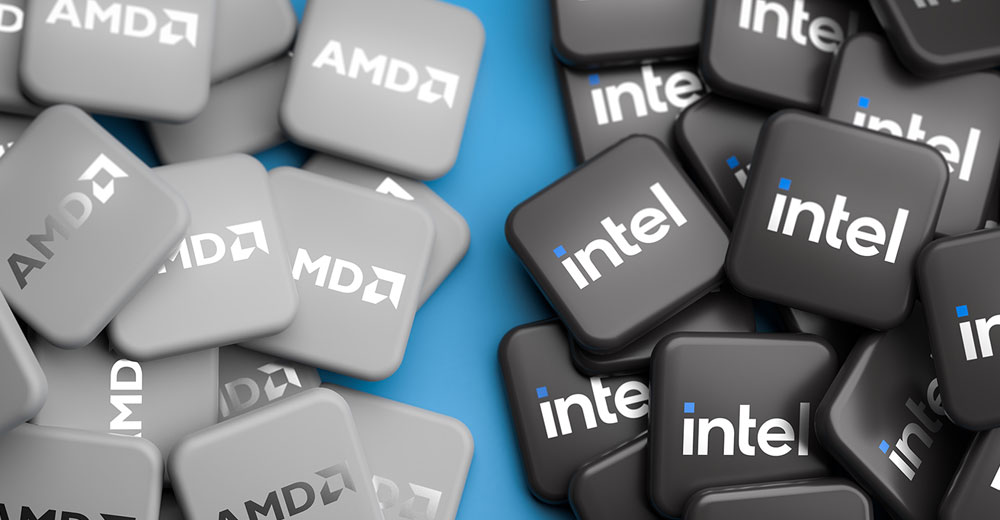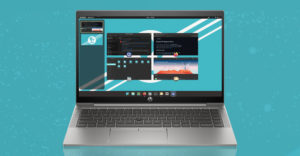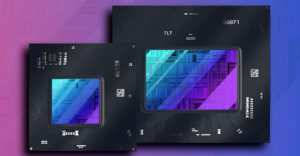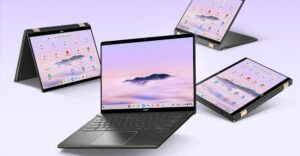Intel needed AMD in the early days of the personal computer because IBM, and others, wouldn’t buy a technology that was single sourced.
From Intel’s perspective, Intel should always be the predominant seller of the technology given it was the source. Apparently, no one told AMD because AMD wasn’t satisfied. I doubt Intel would have been satisfied either had positions been reversed, with under 20% of the resulting market. This led to conflict between two companies that initially were pretty much tied at the hip on the underlying technology and market.
Up until about a decade ago, Intel maintained a relatively consistent technology lead over AMD and was able to keep that company from becoming a sustaining threat to its CPU dominance. Over the last decade, AMD improved its focused execution while Intel made a side trip to mobile technology which largely failed. Now AMD has closed the performance gap between the two firms.
Last week, AMD launched its Ryzen 7000 “Zen 4” architecture which appears to outperform Intel’s best in both total performance and performance per watt. But Intel has a new product coming as well, so this battle is far from over.
Let’s talk about the competition between these two companies this week, and we’ll close with my favorite gaming laptop, the AMD-based Alienware m17 which I took to the AMD briefing in Austin. It redefines the word “awesome.”
How AMD Caught Up to Intel
If you’ve been an analyst as I have, it seems that companies, in a semi-regular cadence, repeat huge mistakes as if their primary goal was to go out of business. The mistake I’m talking about this time is to pivot toward a disruptive technology that threatens your dominance rather than fighting it.
The first time I witnessed this personally at IBM was when PCs and servers came out. Instead of defending and advancing its mainframe dominance, IBM instead seemed to agree mainframes were dead and didn’t pivot to sustain a competitive position against companies like Dell and Sun Microsystems that were built around this new concept.
The second time was when Apple launched the iPhone. Instead of defending its more secure, business-oriented Blackberry smartphone offering, Research In Motion (RIM) pivoted and ended up losing the market it had dominated.
Intel’s mistake is similar. Instead of coming up with alternatives to the smartphone and fighting back against the claim that the PC was dead, it took its eye off of its core markets and instead tried to take Qualcomm’s market. Granted, AMD’s inability to make the same pivot resulted in its refocus on PCs and servers which allowed it to catch up and begin to displace Intel, something AMD couldn’t have done had Intel remained focused on its core markets.
Companies need to understand that chasing a larger and more entrenched competitor from behind typically requires two things: extremely strong execution and for that competitor to stumble. AMD executed very well, and Intel stumbled.
Another, perhaps more certain way is to pivot the market to you which was what Sun did with servers (before it decided to chase Microsoft and failed) and Apple did with smartphones. This is what Intel might have to do to end its underdog status in graphics.
Ryzen 7000
AMD’s Ryzen 7000 desktop processor is a performance and efficiency powerhouse. For now, it puts AMD, technically, in the top desktop space with respect to both capabilities. It takes far longer to develop a mobile part, so the mobile version of this new architecture isn’t expected until 2023.
The fight with Intel for mobile dominance will be more difficult because Intel doesn’t seem to care that much about desktop computing, so it’s unlikely to resource a desktop effort to a degree that would allow it to again close this competitive gap.
Some of the interesting things about this new processor is that it loses the pins, so it is far easier to insert than AMD’s former processors (Intel got rid of pins some time ago), and it improved the firmware update process for the chipset. Both will make building AMD systems much easier and keeping AMD systems updated far more convenient.
Since a lot of the desktop computing activity is in gaming, AMD has made impressive improvements to the way this processor can be overclocked and, I expect, once we can talk about benchmarks, we’ll find that it will set several impressive new performance records.
Now that both Intel and AMD have gone to pin-less configurations, I wonder if we couldn’t go to a socket architecture much closer to what we use for SIMs. Being able to just slide a new processor in without having to dismantle cooling first would undoubtedly lead to more post-sale processor upgrades and could allow for a condition where the PC can be upgraded in the store at purchase.
This could significantly lower inventory costs, increase buyer choice, and enable a far stronger processor upgrade market regardless of which company implemented this change.
Advice for Intel
If I were Intel, I’d be thinking about pivoting the desktop market back to where I’d have an advantage. There are two non-mutually exclusive paths to doing this — in other words, they could do both. One would be to focus on provisioning a cloud offering like Nvidia’s GeForce Now, or Windows 365, which allows them to sell users a sustaining service instead of a desktop PC.
The other more interesting path would be to make the platform far more sustainable and easier to upgrade than replace. The circular economy concept, which focuses on upgrading hardware rather than replacing it, is ecologically better than discarding and replacing the whole PC.
Rearchitecting the desktop to be this way (which is what IBM tried to do with the PCjr) could be a way to make AMD’s entire desktop configuration obsolete. Of course, if AMD did this first, Intel would be screwed instead.
Finally, when I first met Intel CEO Pat Gelsinger, he ran an effort to create the future innovative desktop PC designs suggesting he’d be up for making this kind of a change happen.
Modular PCs
On the same topic of desktop PC redesign, there was a company a couple of decades ago that was staffed by ex-IBM PC company executives that tried to redesign the PC and server. The PC redesign looked awesome and placed the operational parts of the PC on the desk and the then noisy parts, like the power supply, on the floor. The server’s design was even more interesting.
Called the Archistrat server, its manufacturer, Panda Project used a passive backplane technology that allowed every part of that server to be replaced as a card. The chipsets, processors, and graphics accessories (ports) were all cards that could be swapped out to either reconfigure the server or to update it.
Toshiba had something somewhat similar called the Equus. The Panda Project failed because the firm had horrid financial controls and it ran out of money. Equus failed because not only was the product more expensive, but there was also no PC sustainability effort of note back then.
IBM did have a modular PC effort following PCjr, but it wasn’t big on parts back then. You must be a company like AMD, Intel, or Qualcomm to make an architectural change like this economically feasible since you need more than one OEM to adopt it to lower the parts cost.
Currently Dell is attempting something similar with Concept Luna, an experiment on creating a truly modular laptop.
The Importance of Image
While AMD may now own the performance crown, most still believe that Intel outperforms AMD and belief, not facts, drive purchase decisions. Customers’ and OEMs’ decisions are subordinate to customer beliefs. For instance, only around 3% of corporate buyers use tools like Intel’s vPro, but most of these customers believe they need them to make vPro and AMD Pro requirements.
Now, I’d argue that those companies that use vPro and AMD Pro are both more secure and have fewer operational problems, suggesting the focus of both AMD and Intel should be collaboration and use of the technology rather than competition. This would improve the entire ecosystem and reduce the chance that a third vendor could replace them. But that argument is not widely supported.
AMD’s sustaining competitive problem is that people believe Intel outperforms AMD. If it really wants to advance against Intel strongly, AMD must not only outperform Intel, but also convince the market of that fact.
Wrapping Up
Building desktop PCs is my hobby and I’m clearly looking forward to getting the parts from AMD to build my next desktop PC masterpiece. But, I think, sustainability efforts are going to increasingly push both desktop and laptop PC designs in the future. Meanwhile, cloud services like GeForce Go and Windows 365 remain the long-term future for the offerings, and the market is therefore due for a major pivot.
Whoever makes that pivot first may own the future of the PC space. Even Qualcomm is in the hunt for that disruptive, more sustainable future. AMD ended last month with the leading desktop PC solution, but this battle is far from over, and the next steps that AMD, Intel, and Qualcomm make could redefine the very nature of the desktop PC.

Alienware m17 R5 Gaming Laptop
My normal carry notebook is the HP Elite Folio, although I’m still waiting to get the newer Dragonfly Folio. It is light, has battery life to die for, and is amazing for videos on a plane. However, it isn’t very powerful, has compatibility issues (Qualcomm Snapdragon-based), and I have large-screen withdrawal symptoms when I travel because I use a Dell 49″ monitor in my office.
The AMD-based Alienware m17 R5 (Dell owns Alienware) is arguably the exact opposite of that laptop. It is heavy (its power supply weighs close to what the entire Elite Folio weighs), has up to five hours battery life (compared to up to two days), and you won’t be using this in a coach seat on a plane unless you are very small.
However, it has performance to die for, a 17″ screen and large keyboard (I have large hands), and rather than the stealth black look of the Elite Folio, it lights up screaming “look at me.” Subtle it isn’t.
Surprisingly, because I would have bet money this wouldn’t work, it took seat power on all my United flights so I could play movies on it the entire flight. Watching movies on a 17″ rather than 14″ screen on a plane is awesome.
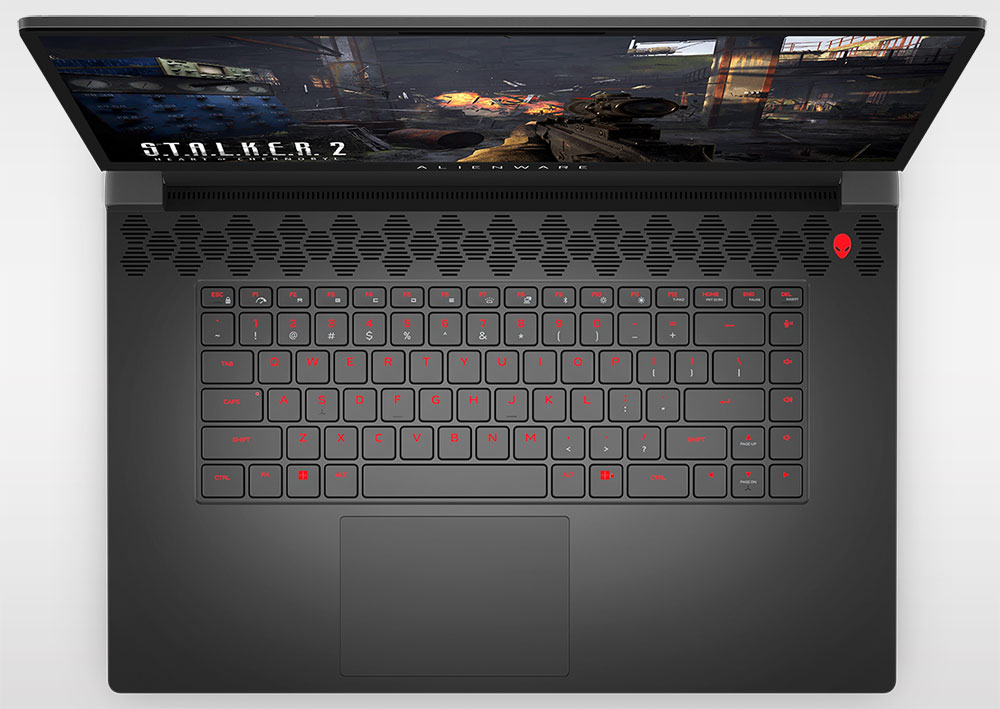
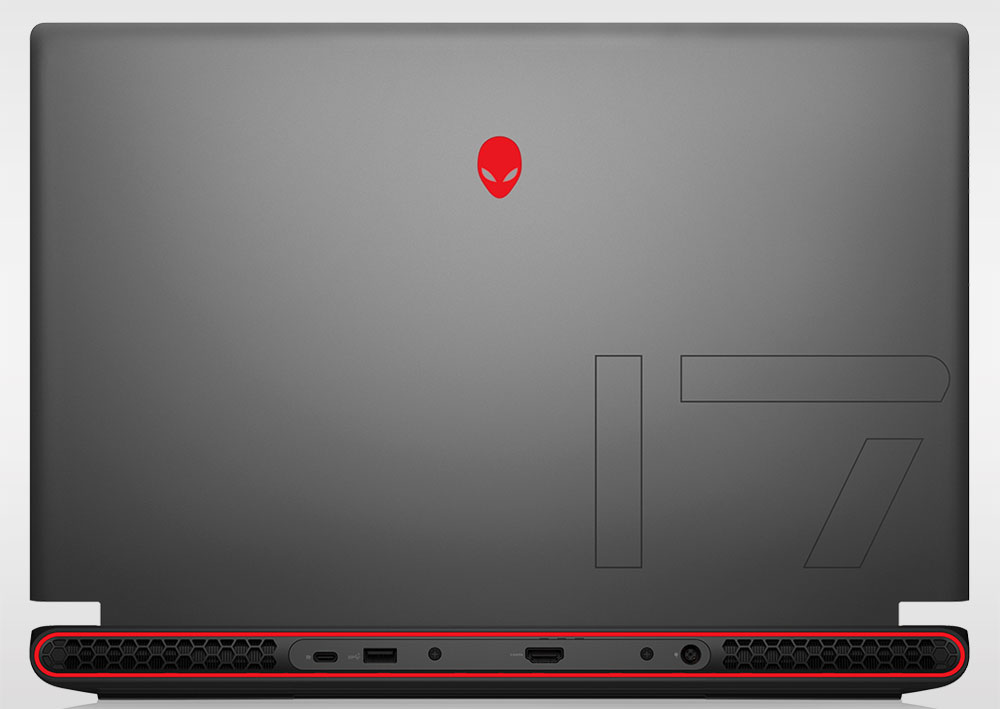
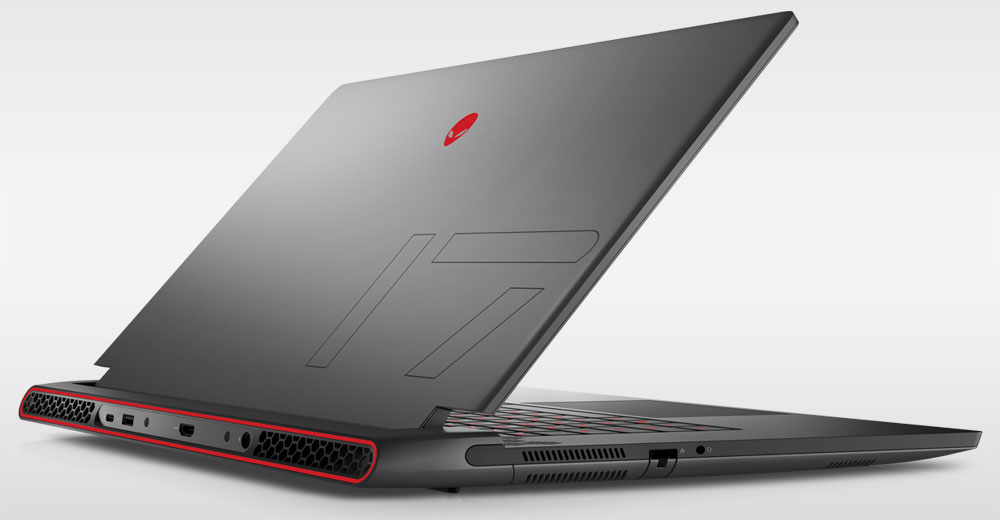
Alienware m17 R5 Gaming Laptop (Images Credit: Dell)
Being x86 based, it ran all the Windows apps without issue, and the performance, if you want to game while on the road, is outstanding — though gaming on a plane is problematic because there is no place to put a mouse and gaming with a trackpad, so for me, it’s a non-starter.
The laptop fit surprised me as well, with a little juggling in my Tumi laptop bag. If I used both laptop straps, I got used to the weight surprisingly quickly. This laptop would be ideal for someone doing hybrid work, either alternately at home or office, or at a variety of locations where they are given a desk to work — all of which must have available AC power.
The m17 works well for school or in smaller businesses that allow employees to have any PC they want, but not at corporations that frown on gaming in general and where the very things that make this laptop stand out would create problems with management. Clearly, given this is a serious gaming computer, a non-gamer will likely prefer something else.
If you like to move around the house to watch pets, children, or just to work, enjoy movies, or game on the patio – all of which make a desktop computer less practical — this machine is a godsend.
In closing, I thought I was going to hate taking the Alienware m17 on the road but didn’t. It was surprisingly fun to watch the person sitting next to me have an “Oh crap, what the hell is that?” moment every time I took it out of my backpack. The Alienware m17 turned out to be amazing — and it is my product of the week.

